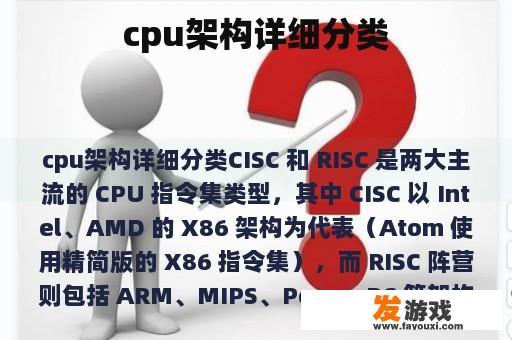CPU架构分为指令集架构和执行引擎架构两种。指令集架构是一种由一系列可寻址部件(如操作数、地址等)构成的操作系统指令 *** 。这种架构通常采用一种特定的编程语言,以提高程序的执行效率和可读性。,执行引擎架构是一种由多个处理器核心组成的架构。每个核心都包含一个专用的指令集,用于处理特定的任务。这些核心通过硬件级联来协同工作,以便在多核处理器上执行复杂的任务。,还有一些特殊类型的CPU架构,如混合架构、应用架构和嵌入式架构等,它们各有其独特的优缺点。选择哪种类型的问题需要根据具体的用途和需求来进行权衡。
RISC (Reduced Instruction Set Computing) is a high-level instruction set architecture that performs simple and direct calculations. It is known for its low instruction count, simpler design, and higher efficiency compared to other instruction set architectures such as x86 and ARM.

CISC (Complex Instruction Set Computing) utilizes more complex instructions to perform these calculations. This type of architecture is typically used in more complex systems such as supercomputers, video game consoles, and embedded devices where power consumption and performance are critical factors.
The main difference between RISC and CISC instruction sets lies in their instruction execution speed. CISC CPUs tend to execute instructions faster than RISC CPUs due to their smaller instruction size and lower number of registers.
Another difference lies in their level of control over the CPU. CISC CPUs require the program to be executed first before accessing instructions. On the other hand, RISC CPUs do not have this requirement.

In conclusion, both RISC and CISC instruction sets are essential components of modern microprocessors. The choice of which instruction set to use depends on the specific requirements and performance goals of the application.
